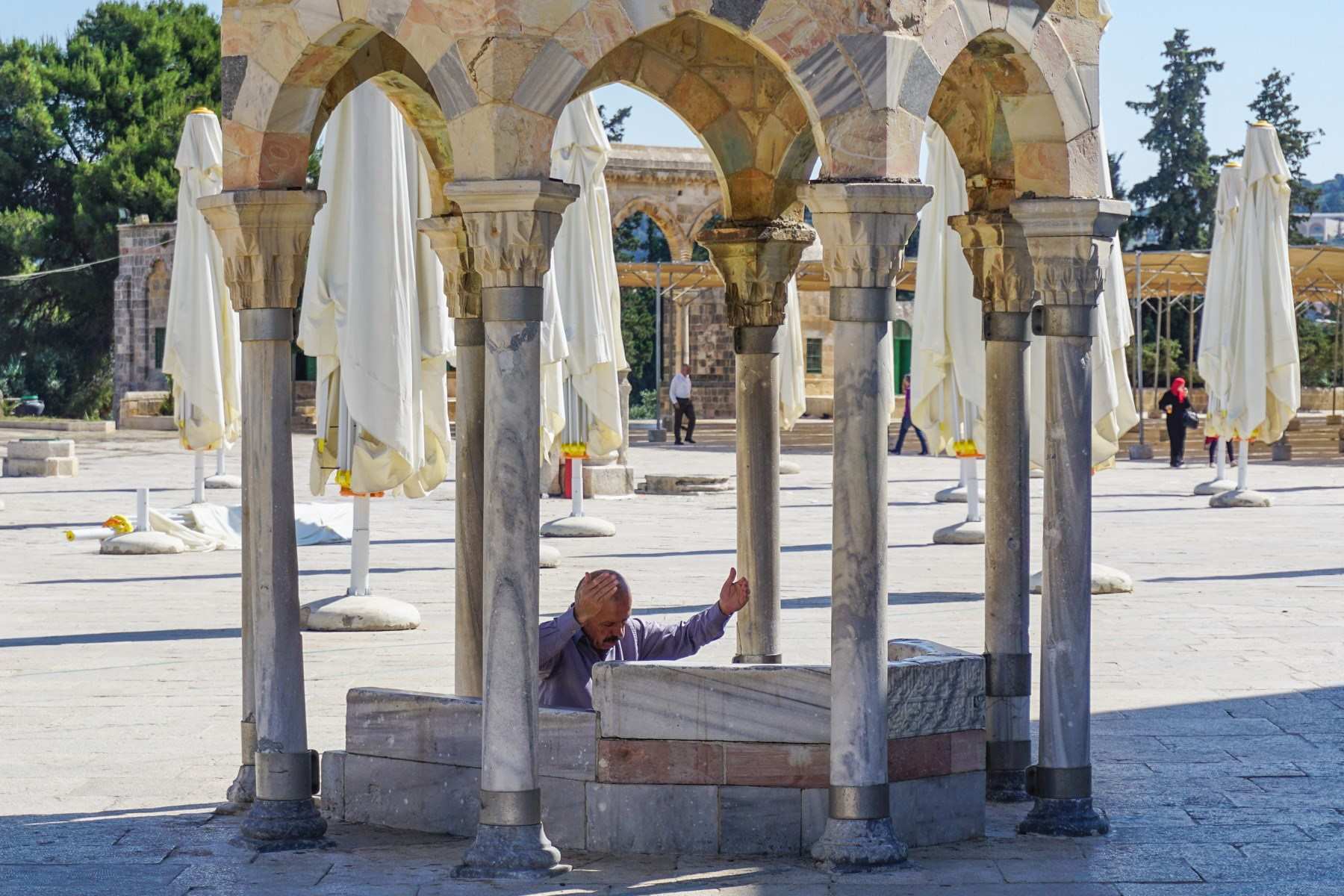
The Dome of the Prophet, also known as the Dome of the Rock, is an architectural marvel located in the heart of Jerusalem. This iconic landmark has captured the imagination of people all over the world with its beautiful design and historical significance. Built in the 7th century, the Dome of the Prophet holds great religious and cultural importance for both Muslims and Jews. Its golden dome and intricate mosaics are a sight to behold, attracting millions of visitors each year. In addition to its stunning aesthetics, the Dome of the Prophet is also home to intriguing historical and architectural facts that make it even more captivating. In this article, we will explore 18 fascinating facts about this extraordinary landmark, shedding light on its importance and influence throughout history. So, let’s dive in and discover the secrets of the Dome of the Prophet!
Key Takeaways:
- The Dome of the Prophet in Saudi Arabia is a UNESCO World Heritage Site and houses the tomb of Prophet Muhammad, attracting millions of Muslim pilgrims every year.
- With its unique octagonal shape, intricate calligraphy, and historical significance, the dome serves as a symbol of unity and spiritual devotion for Muslims worldwide.
The Dome of the Prophet is a UNESCO World Heritage Site
The Dome of the Prophet, located in Medina, Saudi Arabia, is recognized as a UNESCO World Heritage Site. This sacred mosque holds immense historical and religious significance for Muslims around the world.
It is also known as the Dome of the Prophet’s Mosque
The Dome of the Prophet is sometimes referred to as the Dome of the Prophet’s Mosque. It stands as a symbolic landmark and serves as a focal point for worshippers who visit the mosque to pay their respects to the Prophet Muhammad.
The dome was built during the time of the Rashidun Caliphate
The construction of the Dome of the Prophet took place during the time of the Rashidun Caliphate, which was the reign of the first four Muslim caliphs after the death of Prophet Muhammad. It was built to house the tomb of the Prophet and became an integral part of the expanding mosque.
The dome has undergone several renovations
Over the centuries, the Dome of the Prophet has undergone numerous renovations and expansions to accommodate the increasing number of Muslim pilgrims. The dome’s structure and appearance have evolved over time to reflect different architectural influences and styles.
It is one of the largest mosques in the world
The entire complex of the Dome of the Prophet’s Mosque is vast, and it is one of the largest mosques in the world. Its sprawling courtyards can accommodate millions of worshippers during peak times, especially during the holy month of Ramadan.
The dome is adorned with exquisite calligraphy
The interior of the Dome of the Prophet is adorned with intricate calligraphy, which showcases verses from the Quran and various Islamic motifs. The beautiful craftsmanship adds to the spiritual ambiance of the mosque.
The green color of the dome is significant
The green color of the dome holds great significance in Islamic culture. It is believed to represent Paradise and is often associated with Prophet Muhammad, as it was his favorite color.
Millions of Muslims visit the dome every year
Every year, millions of Muslims from around the world journey to the Dome of the Prophet as part of their pilgrimage to Mecca. The mosque and the dome serve as important spiritual landmarks and gathering places for the global Muslim community.
The dome incorporates architectural elements from different time periods
Due to the various renovations and expansions, the Dome of the Prophet incorporates architectural elements from different time periods, including Ottoman, Mamluk, and modern influences. This blending of styles adds to the unique character and historical value of the structure.
The dome has a unique octagonal shape
Unlike traditional dome structures, the Dome of the Prophet features an octagonal shape. This distinctive design contributes to its architectural appeal and sets it apart from other domes found in Islamic architecture.
It houses the tomb of the Prophet Muhammad
One of the most important features of the Dome of the Prophet is that it houses the tomb of Prophet Muhammad. The tomb is considered a sacred site and draws pilgrims from all over the world who come to offer their prayers and show their reverence for Prophet Muhammad.
The dome’s construction showcases intricate craftsmanship
The construction of the Dome of the Prophet showcases the unparalleled craftsmanship of the artisans involved. From the detailed carvings to the meticulous tile work, every aspect of the dome’s design reflects the dedication and skill of the craftsmen.
It is a center for Islamic education and scholarship
The Dome of the Prophet is not only a place of worship but also a center for Islamic education and scholarship. Many renowned Islamic scholars have studied and taught within its walls, contributing to the dissemination of knowledge and religious teachings.
The dome serves as a symbol of unity among Muslims
The Dome of the Prophet’s Mosque stands as a symbol of unity among Muslims worldwide. It serves as a reminder of the shared faith and devotion to Prophet Muhammad, fostering a sense of community and brotherhood.
Visitors can access the dome’s interior
While the interior of the Dome of the Prophet is primarily reserved for worshippers, visitors are allowed limited access to experience its grandeur. This opportunity provides a glimpse into the rich heritage and spiritual significance of the site.
The dome is illuminated at night
As the sun sets, the Dome of the Prophet is illuminated, casting a beautiful glow over the entire mosque complex. This captivating sight attracts both worshippers and tourists alike, who gather to witness the ethereal beauty of the dome at night.
The mosque complex includes other significant structures
In addition to the main dome, the mosque complex also includes other significant structures, such as the Rawdah, where it is believed that prayers are most likely to be answered. These additional structures enhance the overall spiritual experience for visitors.
The dome has become an iconic symbol of Islam
Due to its historical significance and architectural beauty, the Dome of the Prophet has become an iconic symbol of Islam. It is often featured in various artistic representations and serves as a prominent landmark representing the faith.
Conclusion
In conclusion, the Dome of the Prophet is a truly captivating landmark with a rich history and stunning architectural beauty. Whether you’re fascinated by religious sites, historical landmarks, or architectural wonders, the Dome of the Prophet offers a unique experience that is sure to leave you in awe. From its connection to the Islamic Prophet Muhammad to its significance as a spiritual and cultural symbol, this iconic dome holds immense importance for millions of people around the world. So, make sure to include the Dome of the Prophet in your travel bucket list and witness the magic of this remarkable landmark firsthand.
FAQs
Q: What is the Dome of the Prophet?
A: The Dome of the Prophet, also known as the Dome of the Prophet Muhammad, is a religious landmark located in Medina, Saudi Arabia. It is a green-domed structure that marks the burial site of the Islamic Prophet Muhammad.
Q: When was the Dome of the Prophet built?
A: The original structure of the Dome of the Prophet was built in the 7th century, shortly after the death of Prophet Muhammad. Over the centuries, it has undergone several renovations and expansions to its present-day form.
Q: What is the significance of the Dome of the Prophet?
A: The Dome of the Prophet holds great significance for Muslims worldwide as it is considered to be one of the holiest sites in Islam. It is revered as the burial place of Prophet Muhammad and is considered a sacred place for pilgrimage and worship.
Q: Can visitors enter the Dome of the Prophet?
A: No, the interior of the Dome of the Prophet is not accessible to visitors. It is only open to a select few individuals, typically religious scholars or high-ranking officials.
Q: Is photography allowed near the Dome of the Prophet?
A: As the Dome of the Prophet is a religious site, photography is generally not allowed in close proximity. It is important to respect the cultural and religious traditions surrounding the landmark and abide by the local rules and regulations.
Captivated by the Dome of the Prophet's rich history and architectural wonders? Quench your thirst for knowledge with our fascinating articles on Al-Aqsa Mosque, historical landmarks in Binghamton, New York, and facts about Islam and Prophet Muhammad. From sacred sites to cultural treasures, our engaging content will transport you through time and space. Embark on a journey of discovery as you uncover the stories behind these remarkable places and deepen your understanding of the world around you. Don't miss out on this opportunity to expand your horizons and satisfy your curiosity!
Was this page helpful?
Our commitment to delivering trustworthy and engaging content is at the heart of what we do. Each fact on our site is contributed by real users like you, bringing a wealth of diverse insights and information. To ensure the highest standards of accuracy and reliability, our dedicated editors meticulously review each submission. This process guarantees that the facts we share are not only fascinating but also credible. Trust in our commitment to quality and authenticity as you explore and learn with us.


